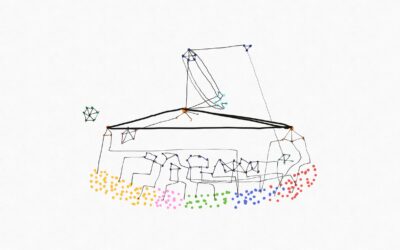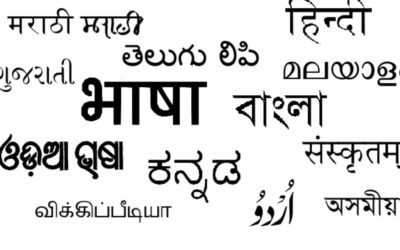It was a bright day at a village in Odisha. At 9:30AM, I was going to facilitate a full day session about Malaria at the government high school which has a total strength of 160 students from 1st to 10th grades. The unique aspect of this school was that, on a typical day, all the students, from the 1st to 10th grade, are seated in a single over sized classroom which looked more like an empty warehouse to me, and are taught by two teachers. There was no other classroom in the entire school.
But what really hits the nail was the fact that during the reading session of the training, the older kids especially the 9th and 10th graders could not read or comprehend the provided reading material about Malaria prevention. It’s important to note that the reading material was in Oriya and the vocabulary was tailor-made for the school children. This revelation, to me, was quite flabbergasting and sad. My thought process got fuzzy and a few questions popped into my head;
“Why is this school in such a dilapidated state?”
“How can two teachers manage more than 160 students across grades?”
“What on earth the government is doing?”
Lack of Teachers
Who knows how only 2 teachers can manage 160 students from 1st to 10th grades. I feel this could be the situation anywhere in India. This is evidenced by a resurvey conducted by PROBE (Public Report on Basic Education) with the support of UNDP (United Nations Development Programme) in 200 random villages in seven states of Jharkhand, Chhattisgarh, Bihar, Uttar Pradesh, Uttarakhand, Madhya Pradesh and Rajasthan in 1996 and 2006; where the report showed that 21% of the sample schools showed characteristic chronic absenteeism among teachers and eventually resulting in scenarios of a single-teacher school where a single teacher is entrusted with teaching all the students in the school (De, et al., 2011). These combined aspects of lack of qualified teachers and chronic absenteeism resulted in plummeting the number of annual teaching days from 200 to 50 (De, et al., 2011)
Lower Standards of Education
As mentioned earlier that the 9th and 10th graders were not able to read Oriya, their native language when they were asked to read from the reading material provided to them. I could imagine the plight of the younger children and could not understand the whole point of attending school if the quality of education is in such damned state. During the conversions with the headmaster, he explicitly used words like ‘Not Smart’ while describing the intelligence of the kids in that school. He even had the audacity to say that it’s a waste of time to teach the kids due to their ‘Lower Intelligence’. I don’t agree with his crass statements due to two things. First, the kids were quick to grasp information from me, a novice who neither has any experience in teaching nor could speak the language. Second, I was a pretty dull student throughout my school life and always had despicable report cards but I like to believe that I ended up pretty alright.
In their book ‘An Uncertain Glory’, John Drèze and Amartya Sen (2013, p.120) state that, “…teaching methods in India are characterized by mindless rote learning, including repetition-typically without comprehension of what has been read, and endless chanting of multiplication and other tables…”.
Elitism in Education
We truly live in a country which is diversified on all fronts, and education is definitely one of them. But the diversity in education is charred with inequity where the smart children from the privileged class grab the opportunities. They have the exclusive privilege to access the ‘reputed’ institutions in India whose exorbitant fees are almost inaccessible to other children who form the majority of the population (Drèze and Sen, 2013). While I always had been ordinary in studies, the financial security offered to me through my parents ensured me the best education and opportunities. If my family was living in poverty, I don’t see myself getting all these opportunities and my future would have been different.
Lack of Infrastructure
The school I had visited had no classrooms, but a huge room which looked more like an empty warehouse impersonating as a classroom where all the students were made to sit. There were few benches and the rest of the children had to sit on the floor. To further add to the misery, there was no electricity, no playground for recreation and on several occasions, the kids cook their own meals as the cook hardly makes his presence. This grim picture of the infrastructure of the schools is quite apparent across the government schools all over the country. According to the District Information System for Education (DISE) report for 2013-14, only 6 out of 10 schools in India have access to electricity. The report also says that average class strength in India is 42 but in states like Bihar and Jharkhand, the average class strength was somewhere around 94 and 97 respectively (Raghavan, 2017).
The experience of visiting a government high school in the remote area was definitely a startling experience for me. The main characteristic issues were absenteeism and lack of teachers, sub-par education standards, lack of basic infrastructure and inequity in the availability of quality education and opportunities provided to the kids. I’m not here to give solutions to these problems, as I’m neither an educationalist nor have the experience or expertise in dealing with the national policies. However, I personally felt that these issues are serious problems which could have serious implications on our future generations. It’s important to put them out in the open, as identifying the problem is the first step to create a solution.
References
- De, A, Khera, R, Samson, M, Shiva Kumar, and A.K, (2011). Revisited: A report on Elementary Education in India. Oxford University Press.
- Drèze, J. and Sen, A. (2013). ‘An Uncertain Glory: India and Its Contradictions’. Penguin books, pp.120-136.
- Raghavan, T. (2017). The poor state of school infrastructure. [online] http://www.livemint.com/. Available at: http://www.livemint.com/Politics/h7WkzI77bMtmN9FLDvyo0M/The-poor-state-of-school-infrastructure.html.
Featured image: Flickr




0 Comments